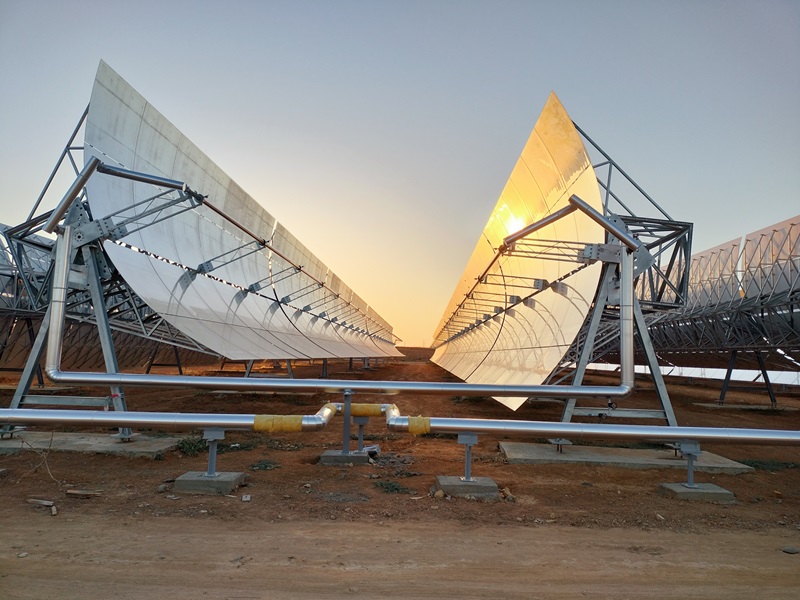
Dominic Zaal is our Team Leader in this project. He said the groundbreaking initiative showcases what can be achieved between us and industry as Australia works toward its net zero emission targets.
"Since we first spoke with Mars in 2019 about their ambitions to decarbonise their process heat operations, we’ve been on a journey of discovery together," Dominic said.
"We’ve been their renewable heat technology partner from day one. So, it’s very exciting to now see them deliver a completely renewable solution for their operation by 2026.
"It’s another great example of a company taking a leadership role in the industrial decarbonisation space."
To underpin Australia’s energy transition, we undertake a wide range of research on a wide range of solutions. These include concentrated solar thermal (CST) and associated thermal energy storage (TES) technologies.
Through our management of the Australian Solar Thermal Research Institute (ASTRI), which Dominic leads, we are working to make thermal technologies more efficient and competitive.
"Thermal energy storage is a key component of the work program at ASTRI, which has been funded by the Australian Renewable Energy Agency (ARENA) since 2012," Dietmar said.
"One of CST’s major benefits is its ability to store large amounts of thermal energy cost effectively, sufficient to generate over 15 hours of continuous renewable energy. This heat can be used for overnight steam production or electricity generation.
"We have also been collaborating with industry on electrical thermal energy storage (eTES) systems to displace gas for steam-based manufacturing processes."
This work led to the installation, in mid-2023, of an eTES demonstration system by Graphite Energy at Mars Wodonga that delivered significant savings.
In Australia, industry accounts for 57 per cent of our total annual energy use, with process heat accounting for more than 50 per cent of this energy. At the Mars Wodonga facility, 25 per cent of the site’s energy usage is electricity and 75 per cent is from gas burnt to make process heat.
While all of Mars’ electricity emissions are displaced through grid-connected renewable energy purchases, displacement of the 75 per cent of process heat emissions has been more challenging.
This is where we stepped in. Our breadth and depth of expertise in solar research enabled Dominic and his team to provide technical advice and support to Mars on cost, risk and integration on a range of renewable heat technologies.
The cornerstone of Mars Wodonga’s thermal emission displacement efforts is a $39 million CST project.
With CST, mirrors concentrate sunlight onto a targeted location at high temperatures. The heat is captured, stored and dispatched on demand. This can be in the form of steam to generate electricity via a turbine or used directly for a wide range of industrial process heat applications.
At Mars Wodonga, this involves the installation of an 18-megawatt Parabolic Trough CST plant providing between four and 10 hours of thermal energy storage. The project is jointly funded by Mars and ARENA.
"From the beginning of our discussions, CST was identified as the option that would deliver the highest abatement for Mars Wodonga’s available onsite land," Dominic said.
"Although the upfront costs were high, CST was able to generate more renewable energy per square metre than any other technology."